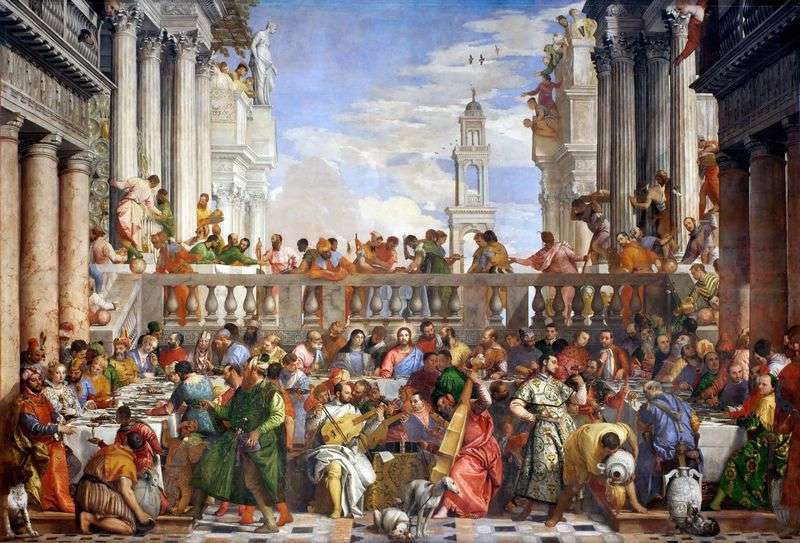
“The Wedding in Cana,” also known as the “feast in Cana,” is the work of Paolo Veronese, depicting the biblical story of the marriage feast described in the Gospel of John, in which Jesus turned water into wine. The wide canvas is made in the style of the Mannerism of the High Renaissance, and is the widest canvas in the Louvre.
In the work, the stylistic influence and harmony of such artists as Leonardo, Rafael and Michelangelo is felt. While the art of the High Renaissance seeks ideal proportions and beauty, Mannerism exaggerates these ideas by adding unnaturally elegant, asymmetrical compositions filled with tension and instability. In “Wedding in Cana,” Veronese used a variety of technical tricks, showing intelligence and sophistication.
The dining room, designed by the architect Andrea Palladio from June 6, 1562, is decorated with the refectory of the Basilica of San Giorgio Maggiore. The contract between the Benedictine monks and Paolo stipulated that the artist should receive 324 ducats and a barrel of honey in payment for the painting.
From the 16th to the 18th centuries, for 235 years, the work adorned the monastery, until the Napoleon’s soldiers stole it as a trophy on September 11, 1797, during the French revolutionary wars. For more comfortable transportation, “Wedding in Cana” was cut in two and reassembled already in Paris. Later, a digital copy of the canvas was made for San Giorgio Maggiore. Nowadays the original is kept in the Louvre.
The backdrop of the canvas is a mixture of architectural details of antiquity and the Renaissance. Columns, low balustrades and towers behind are combined in one composition. It is worth noting that a group of musicians in the foreground plays on the instruments of late Renaissance time.
Among the numerous figures, there are about 130 of them in the picture, you can meet such historical figures as Suleiman the Magnificent, Emperor Charles V, Daniele Barbaro, Marcantonio Barbaro and many others. Including the author included in his work self-portrait, as well as artists Jacopo Bassano, Tintoretto and Titian. And, of course, the picture depicts biblical personalities.
The lower part of the picture is dominated by Greco-Roman architecture. It contains popular characters of that time and historical figures invited to the biblical meal. Here we see Jesus. This is the only character that looks directly at the viewer.
In the picture there is a hidden symbolism showing the futility of human vanity. It appears in the hourglass, on the vertical axis, relative to Jesus. On her, but above, above the head of Christ, is depicted the figure of the cutting lamb, which shows the proximity of death and earthly pleasures. A lot of interpretations and motives are still controversial.
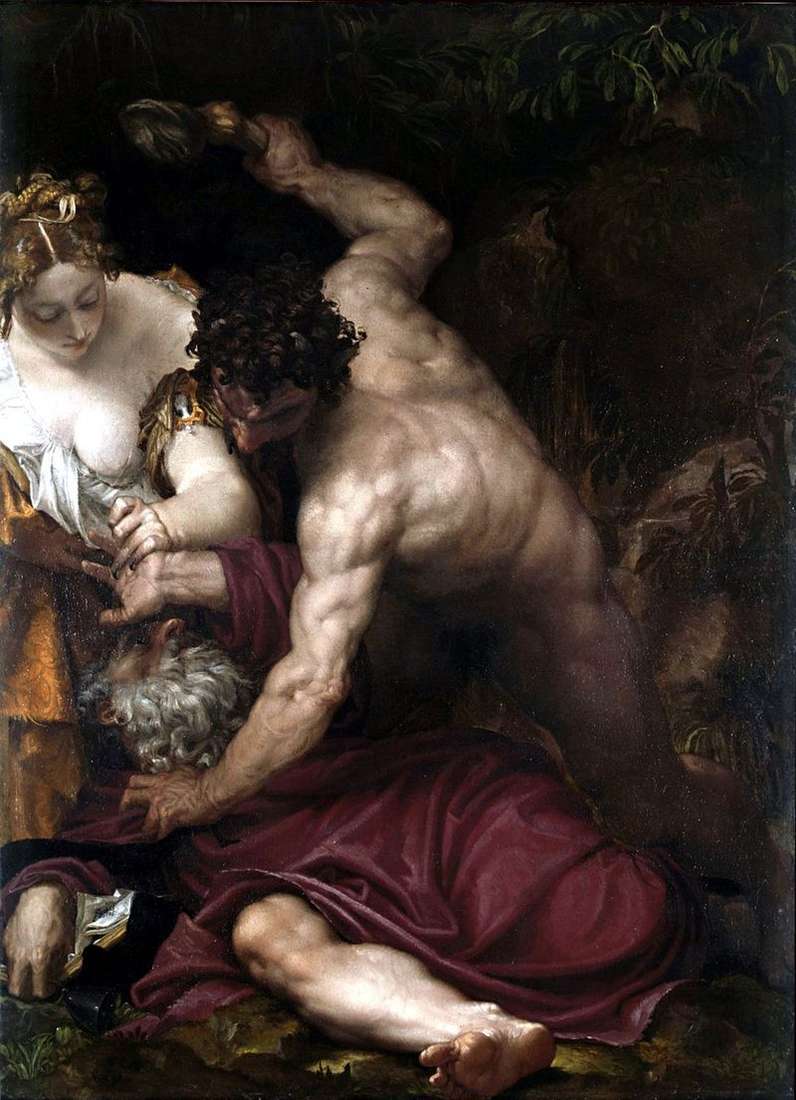 The Temptation of Saint Anthony by Paolo Veronese
The Temptation of Saint Anthony by Paolo Veronese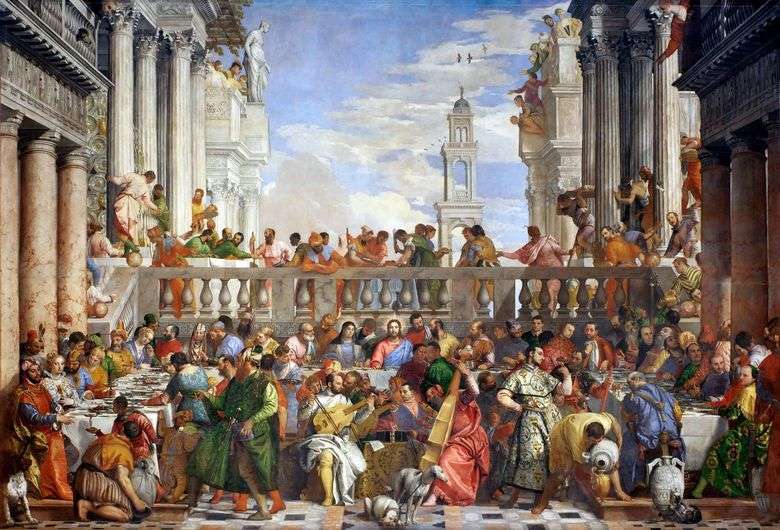 Boda en Cana – Paolo Veronese
Boda en Cana – Paolo Veronese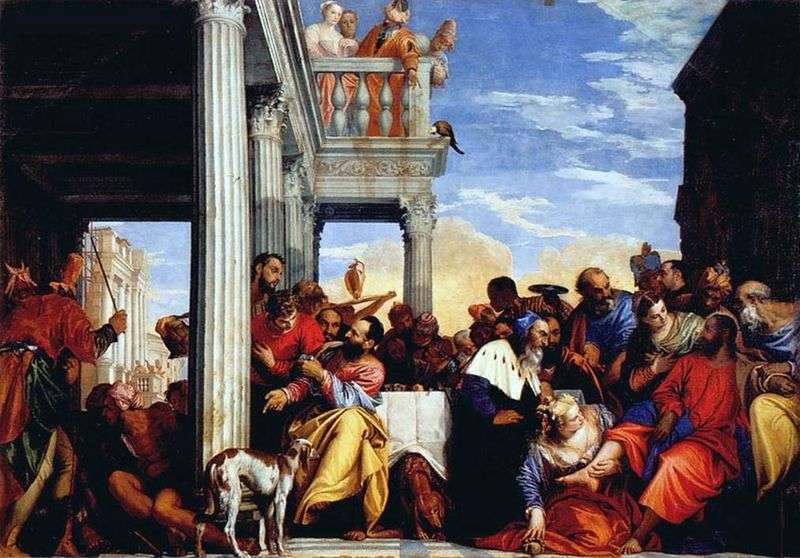 The Feast of Simon the Pharisee by Paolo Veronese
The Feast of Simon the Pharisee by Paolo Veronese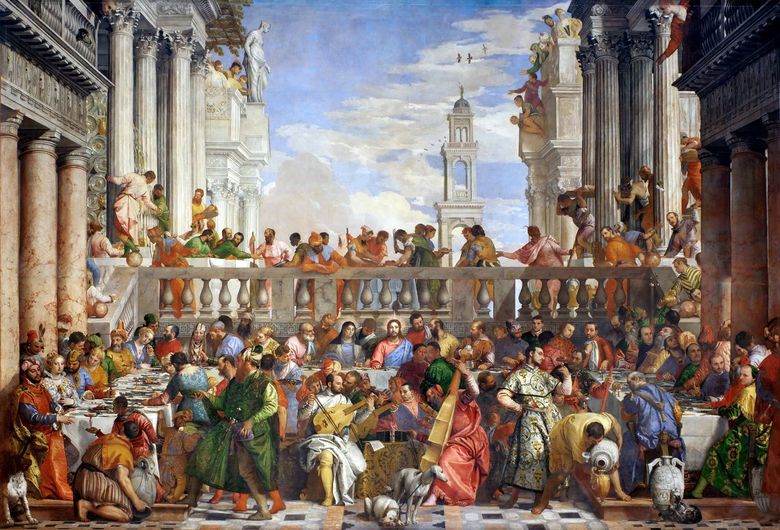 Mariage à Caen – Paolo Veronese
Mariage à Caen – Paolo Veronese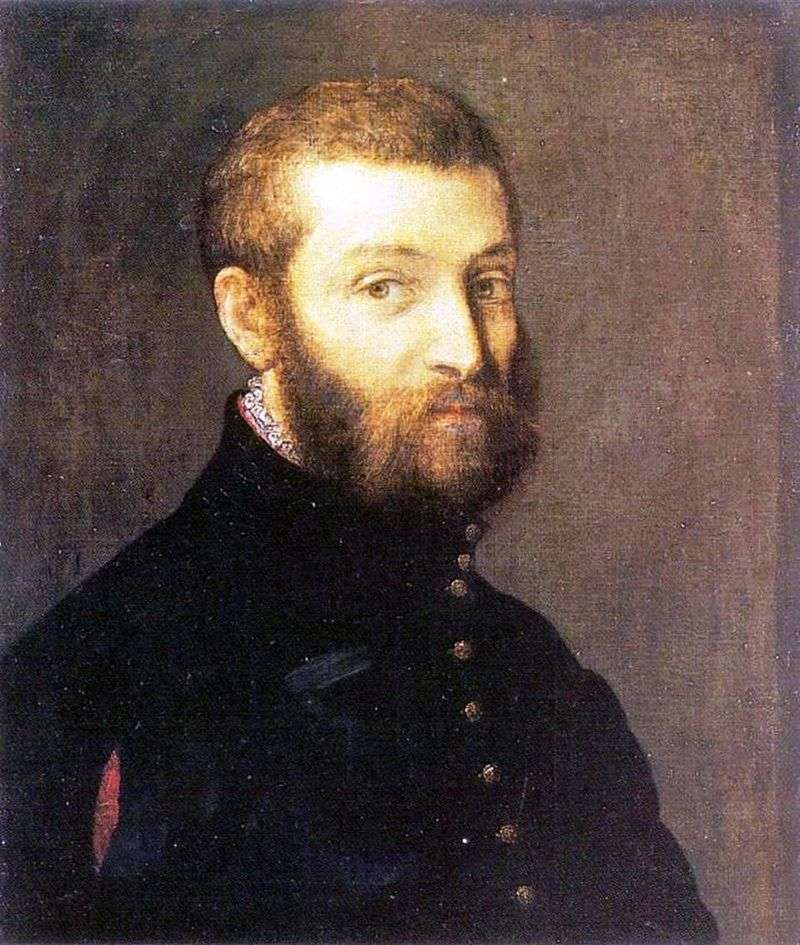 Self-portrait by Paolo Veronese
Self-portrait by Paolo Veronese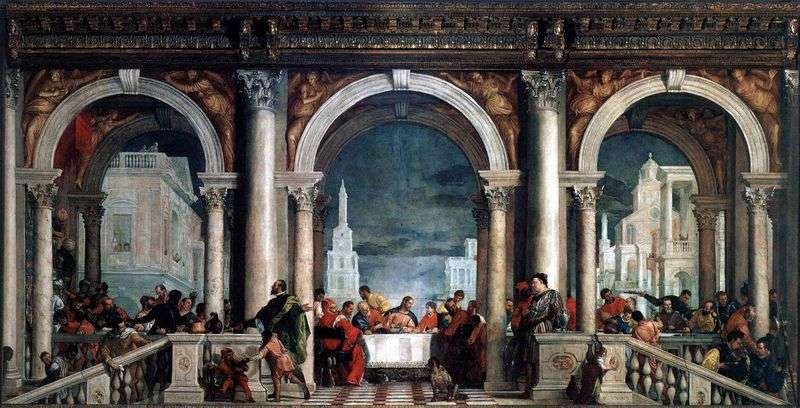 A feast in the house of Levi by Paolo Veronese
A feast in the house of Levi by Paolo Veronese Last Supper by Paolo Veronese
Last Supper by Paolo Veronese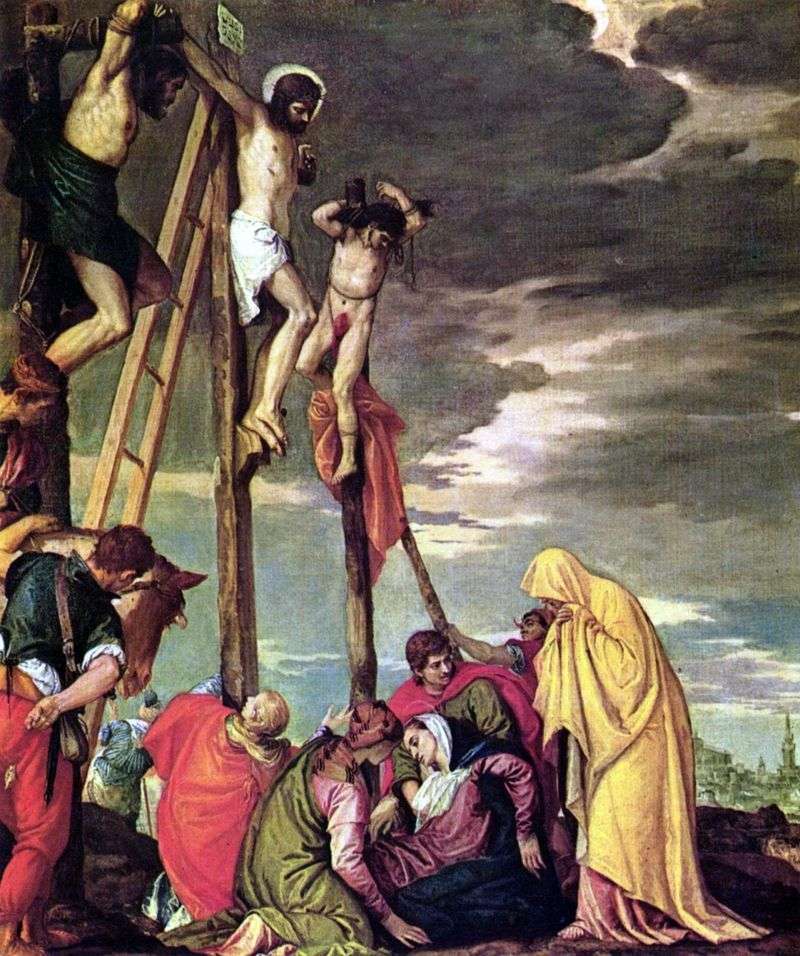 Calvary by Paolo Veronese
Calvary by Paolo Veronese